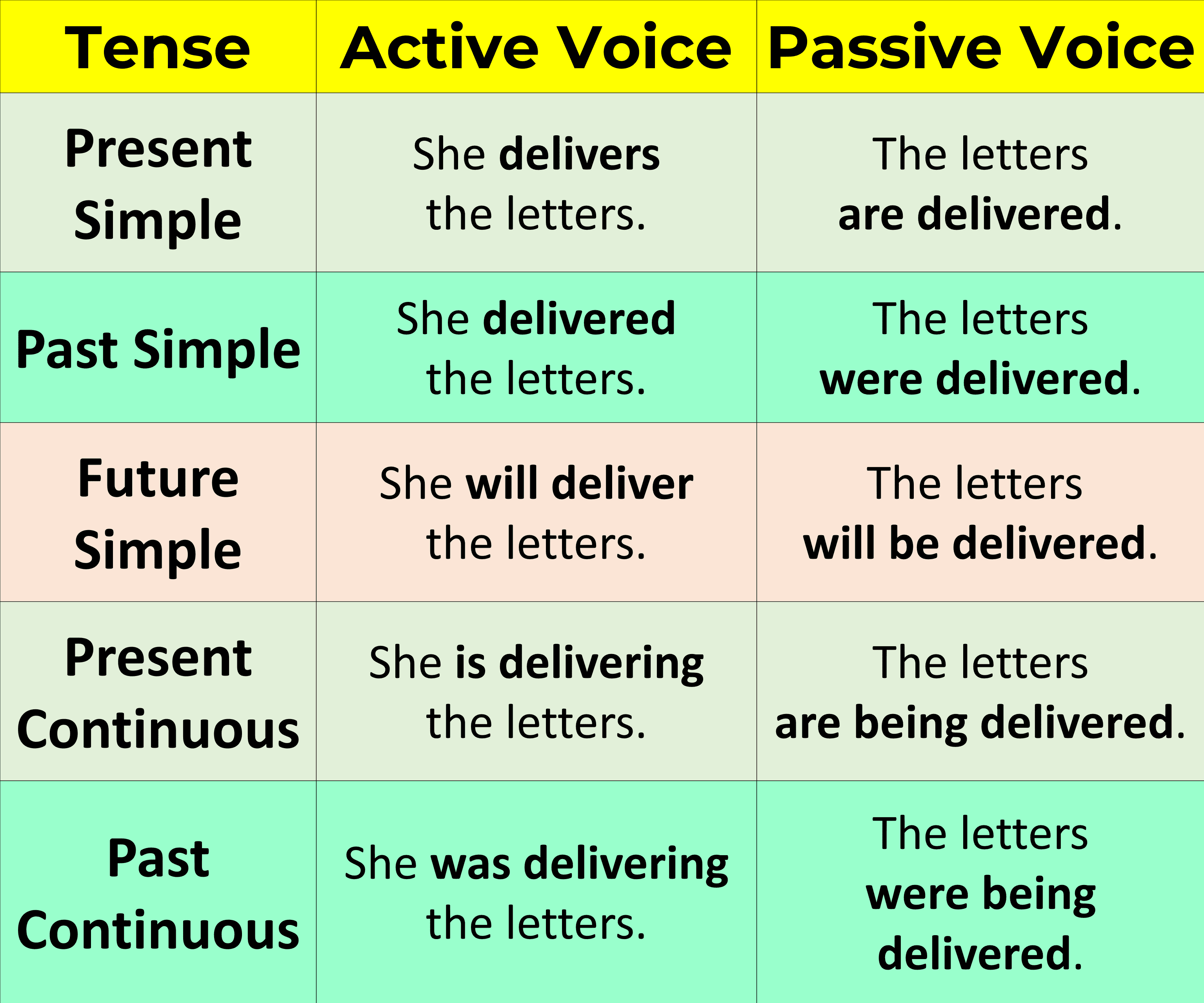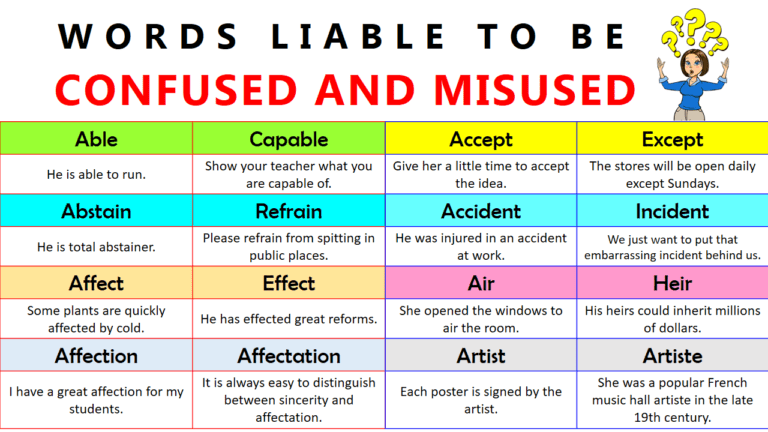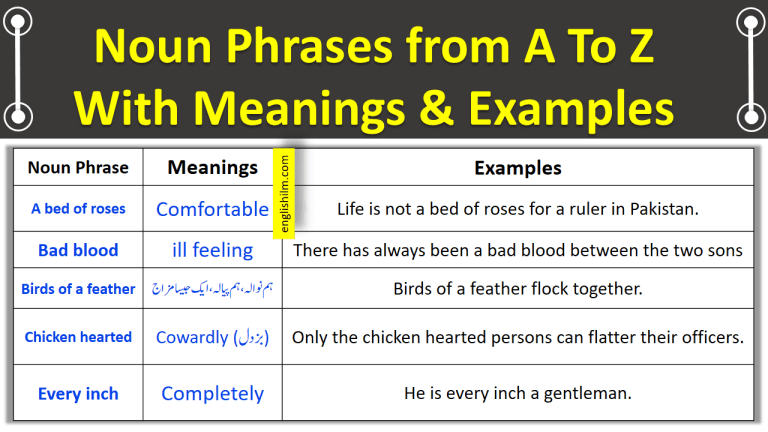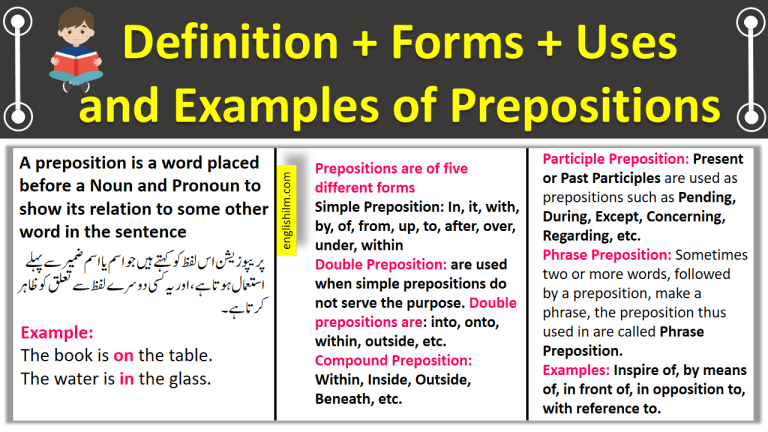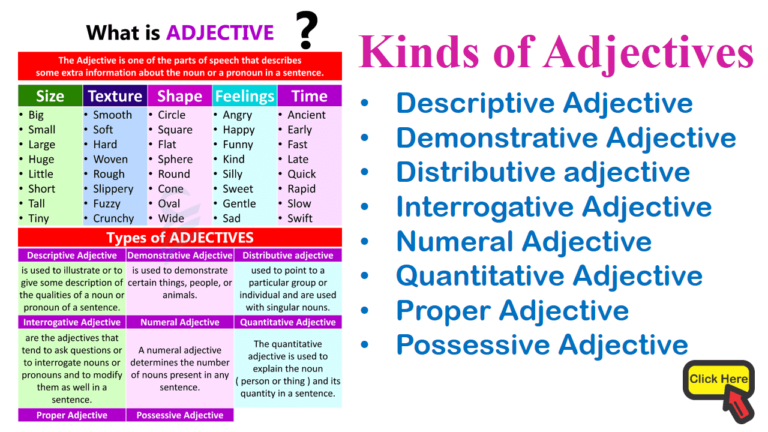Understanding how active and passive voice changes with different tenses is an important part of mastering English grammar. In this blog post, you will learn how a sentence changes from active to passive voice across various tenses using just one clear example. This method helps you memorize rules easily and understand sentence structure better. A helpful chart is also included at the end of the page for quick reference and free download.
To learn more useful grammar lessons, visit our grammar category.
Active and Passive Voice
Understanding active and passive voice is very important for learning English. These are two ways to write or say the same thing, but the focus is different. In this article, we will learn what they are and how they change.
What are Active Voice?
In active voice, the subject does the action. It is the most common way we speak and write.
Structure of Active Voice:
- Subject + Verb + Object
Examples of Active Voice:
- Ali eats an apple.
(Here, Ali is the subject who is doing the action — eating.) - She sings a song.
(She is doing the action of singing.)
What are Passive Voice?
In passive voice, the object becomes more important. The action is done to the subject, not by the subject.
Structure of Passive Voice:
- Object + Helping Verb (is/was/etc.) + Past Participle + by + Subject
Examples of Passive Voice:
- An apple is eaten by Ali.
(The apple receives the action. We don’t focus on Ali.) - A song is sung by her.
Passive voice is often used when:
- We don’t know who did the action.
- We don’t want to say who did it.
- We want to focus on the object or result.
Changes of Words in Active and Passive Voice
To change a sentence from active to passive, we need to change some parts of the sentence. Look at the table below:
| Active Voice | Passive Voice | Change |
|---|---|---|
| eats | is eaten | Use is/are + past participle |
| ate | was eaten | Use was/were + past participle |
| has eaten | has been eaten | Add been with has/have |
| will eat | will be eaten | Use will be + past participle |
| is eating | is being eaten | Use is/are + being + past participle |
Changes With Tenses in Active & Passive Voice
Take a look at the below-listed sentences. You can see that we are using only one sentence. We will make changes in the same sentence with the changes of tense in active & passive voice.
| Tense | Active Voice | Passive Voice |
| Present Simple | She delivers the letters. | The letters are delivered. |
| Past Simple | She delivered the letters. | The letters were delivered. |
| Future Simple | She will deliver the letters. | The letters will be delivered. |
| Present Continuous | She is delivering the letters. | The letters are being delivered. |
| Past Continuous | She was delivering the letters. | The letters were being delivered. |
| Going to | She is going to deliver the letters. | The letters are going to be delivered. |
| Present Perfect | She has delivered the letters. | The letters have been delivered. |
| Past Perfect | She had delivered the letters. | The letters had been delivered. |
| Infinitive | She has to deliver the letters. | The letters have to be delivered. |
| Modals | She must deliver the letters. | The letters must be delivered. |
Active and passive voice isn’t rocket science. You can learn it with the above-given method. I’m pretty sure no one is able to provide this kind of the easiest method to memorize the rules of active & passive voice. I hope you’ll like our work and that you got the easiest way to memorize. Let’s take a look at the below-given chart.
Active and Passive Voice Chart
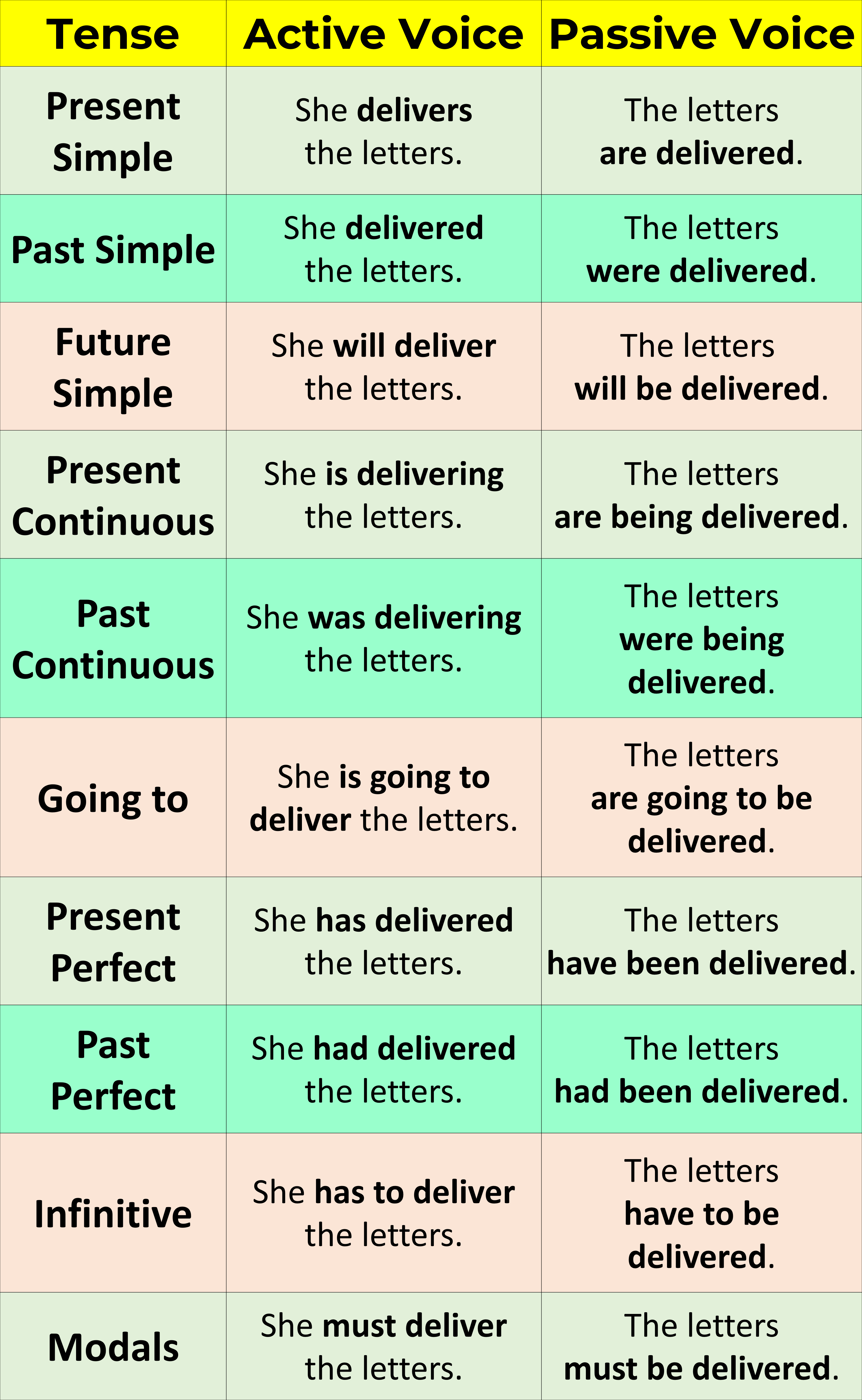
Revision of the Rules to form the Passive Voice
| Tenses | Active | Passive |
| Present Indefinite | 1st form of the verb + s/es Do/does (not) + V1 | Is/am/are + V3 |
| Past Indefinite | V2 Did (not) + V1 | Was/Were + V3 |
| Present Continuous | Is/am/are (not) + V1 + ing | Is/am/are (not) + being + V3 |
| Past Continuous | Was/were (not) + V1 + ing | Was/were (not) + being + V3 |
| Present Perfect | Has/have (not) + V3 | Has/ Have (not) been + V3 |
| Past Perfect | Had (not) + V3 | Had (not) + been + V3 |
| Future Perfect | Will/Shall (not) have + V3 | Will/shall (not) have + been + V3 |
| Modal Verb | Will, Shall, would, should, can, could, may, might, must, ought to + V1 | Will, Shall, would, should, can, could, may, might, must, ought to + be + V3 |
| Infinitive | To + V1 | To be + V3 |
Rules To Form The Passive Voice Chart
Related Lessons

